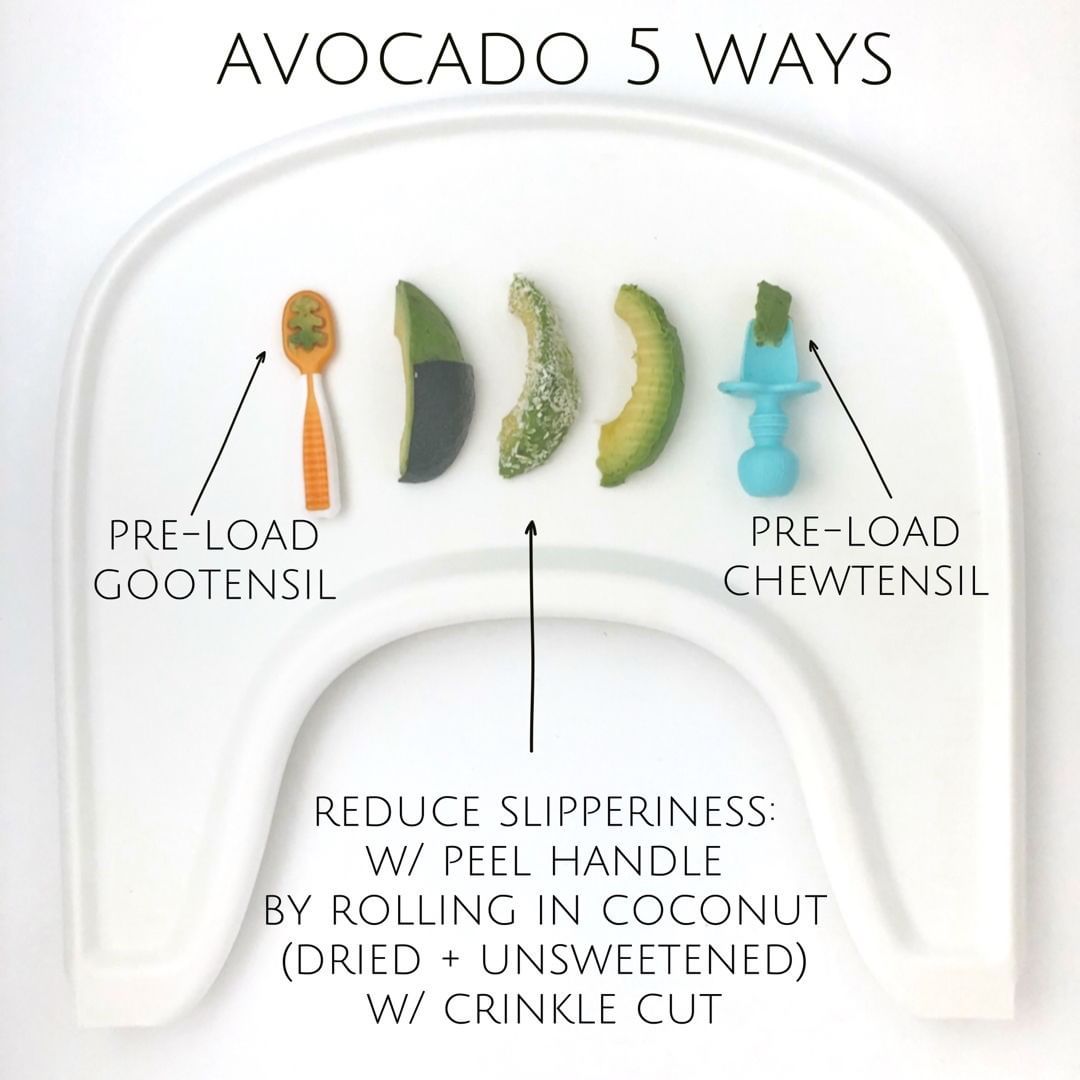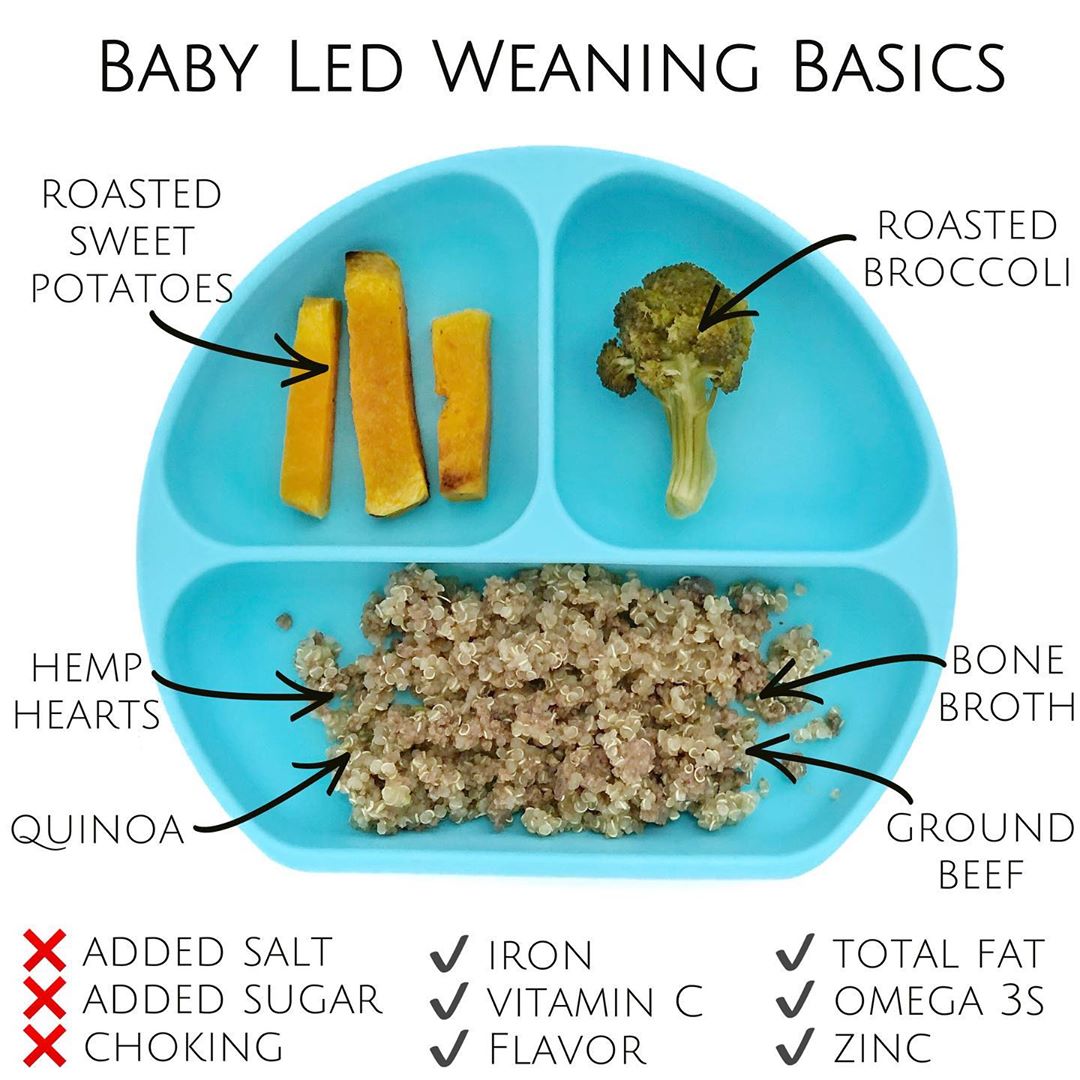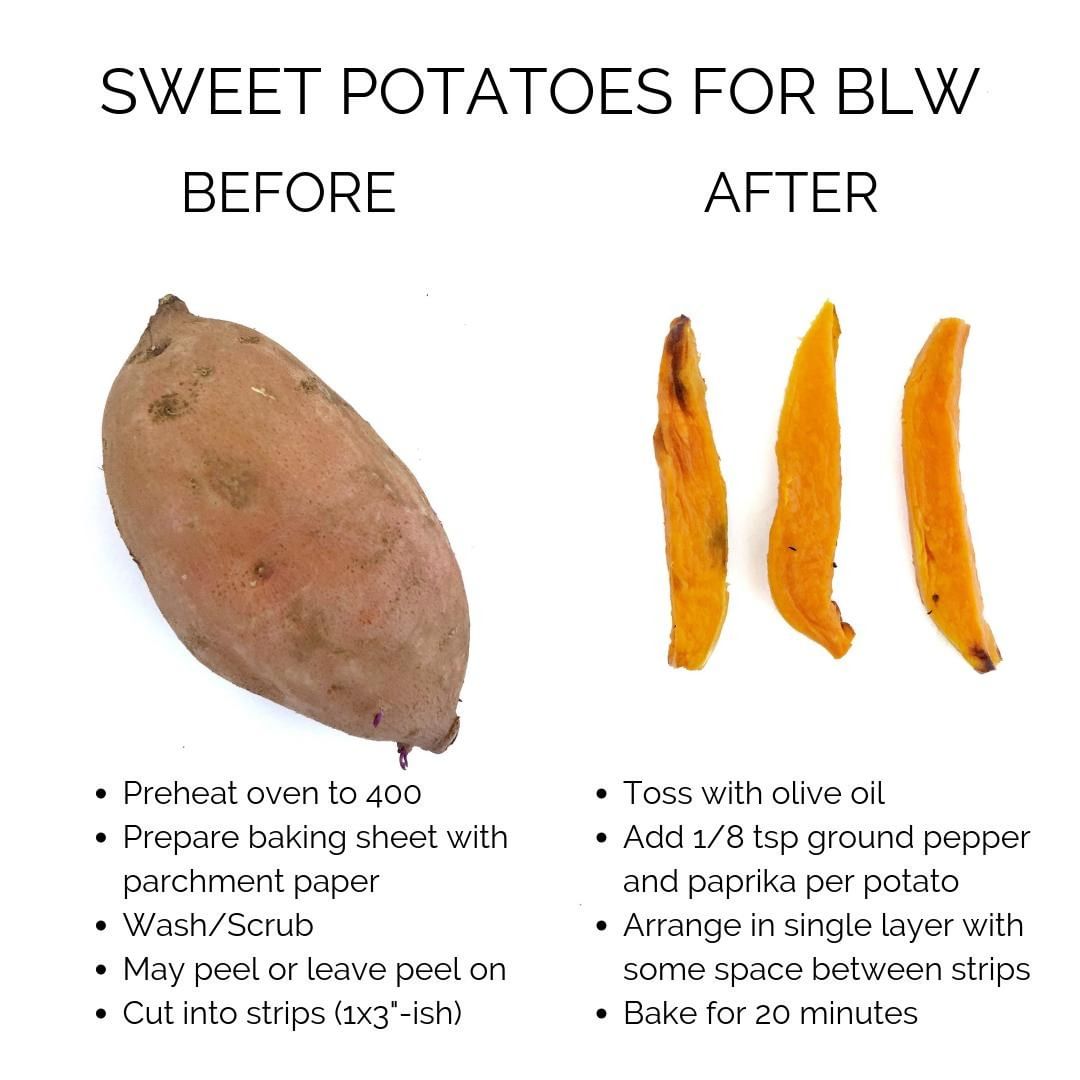BLW: Safe First Finger Foods
Whether you are using a BLW approach or are beginning to transition off of purees and onto finger foods, this post shares some safe first finger foods starting with fruits and vegetables. However, don’t limit yourself to just these food groups! My Baby Led Weaning Meal Builder shows you how to pair vitamin-rich options like fruits and vegetables with iron-rich foods and energy-rich foods (being those that are high in healthy fats - something your baby needs for proper development!
BLW: Safe First Finger Foods
Many of us are in moms groups where horror stories have been shared about the young child who choked on a grape, even though it was cut in half. Some of us have seen the initial reaction to our infant gagging and had that pit in our stomach of fear for, “What if they choked?” But one thing all of us know is that fear around feeding young eaters is real. This is why understanding safe feeding practices are essential tools to keep in our parenting toolbox, including how to handle scenarios if a child does choke and what are safe first finger foods to prevent such from happening. Such tools* make us all the more confident and capable when scooting our little one up to the dinner table.
Concerns over our kids choking is at the root of “how to feed your child,” especially for families who are choosing a Baby-Led Weaning (BLW) approach to starting solids. The problem is that when we don't know what safe first finger foods even are, our sense of freedom and flexibility to offer new foods to our infants is often diminished.
We see this with parents who use a traditional approach to starting solids and BLW alike. Parents may get stuck offering purees for too long out of fear for what to offer once their infant advances beyond lumpy purees, squeeze pouches, and puffs. Similarly, parents who are curious about BLW may stall with when to start because they are unsure about what are safe first finger foods to start with. Many parents who have been through this a few times can argue, “it doesn’t have to be so hard, complicated, nor confusing.” But when you are dealing with real fears over real concerns (like choking, as well as food allergies, intolerances, etc.) from first time parents (or as a parent doing BLW for the first time), the reality is it does feel hard, complicated, and confusing.
The good news is: there are ways to be simple and straight-forward about offering infants safe first finger foods. There are plenty of opportunities for your infant to safely explore new foods. Whether you are choosing to use a BLW approach to introducing solids or you are beginning to transition off of purees and onto self-feeding and finger foods, this post will share some safe first finger foods.
*A must-have tool in every parent’s feeding toolbox is CPR training. This includes training for those who may care for your children like babysitters, grandparents, or others who supervise your infant feeding. If you are unfamiliar with how to perform life-saving CPR or what to do if and when an infant or child chokes, use code VEGGIESANDVIRTUE to take an online CPR course for only $25. In under an hour’s time (or a single naptime!), you and those caring for your child could receive the complete training on how to handle a potentially life-threatening situation. From my experience as a mom of three and pediatric dietitian, this is the most efficient way for caregivers to get CPR certified and the most effective way for families to add another layer of protection against choking as your infant begins solids and becomes more adventurous with their eating.
The following list highlights some of the healthiest, whole foods for infants – starting with fruits and vegetables.
This post will spell out some "starter" options plain and simple. No need to stress nor over-complicate feeding. No need to be confused over if and what they can safely manage at this age. No need to feel hardship in finding healthy foods to feed you tot at home and on the go.
These actionable, all-natural ideas are your go-to guide on what fruits and vegetables to introduce first. Get the complete printable here.
There are so many other wonderful first foods, including those that are iron-rich, which ideally are offered alongside fruits and vegetables at every meal. I cover all of these safe first foods to get started with on my free BLW Meal Builder printable. With this posted up on the fridge or inside a cabinet, you can begin practicing how to offer whole foods in their natural form (or close to) as the ideal way to get your infant accustomed to eating real foods right away.
This post provides you with a list of simple, safe first finger foods to share with your little eater.
Below is a list of some fruits and vegetables that make safe first finger foods. In general, you want all fruits and vegetables to be ripe or cooked until tender enough to pass the “squish test.” To do this, pinch between your pointer finger and thumb (mimicking the type of toothless pressure of an infant’s gums). If the fruit or vegetable squishes easily, the fruit is likely ripe enough or cooked well enough.
For more ideas on what dairy, grains, proteins, and other safe first finger foods, be sure you have printed out this BLW Meal Builder printable.
Fruits & Veggies
As a general rule, all of the following fruits and vegetables should be thoroughly washed prior to preparation. This includes items with peels like bananas and butternut squash, which may either be mouthed on while eating (if the peel is being offered to help prevent slipperiness), or cut through to prepare. Items with an asterisk indicate those that you may want to purchase organic. Regardless of whether you purchase organic or conventionally grown produce, be sure to wash all fresh produce thoroughly with water before preparing and offering to your infant.
Apples*: Peel apple then bake until tender, or peel and grate using a cheese grater. You may consider keeping the peel on so that the apples are less slippery, but babies will not be able to mouth through it so remove as needed once the flesh of the fruit has been consumed. Also try allowing them to self-feed applesauce!
Asparagus: Snap off coarse bottom ends, then break in half to provide baby with a 2-3” spear. Best when given grilled or roasted until tender but not stringy.
Avocado: Cut a small ½ inch wide strip away from the pit, leaving the peel on so it doesn’t mush too much between their fingers when held. The peel will help them facilitate getting it to their mouths. See the image below for other ways to offer avocado!
Banana: Make lollipops by cutting banana in half or thirds (depending on the size of the banana). Give infant the bottom half (or third) of the banana, or cut off the stem. Gently run your knife around the peel about ½ inch from the open end. Gently peel back that strip of peel. Give to infant to gnaw on and gradually repeat process with the peel when they have eaten down towards the peel and need more banana to poke out. You can also unpeel the banana half and split into its three segments for a smaller “finger-like” strip than the whole banana half (or third).
Beets: Roast in thin strips or try as a puree that can be mixed with applesauce.
Bell peppers*: Core, then cut into long 2-3” strips about 1” wide (to account for shrinkage when cooked). May serve grilled, sauteed, or roasted. While the skin may make them less slippery to hold, recommend removing once it is cooled before giving to baby to minimize any risk for choking on the thin skin.
Blackberries: Slice fresh ones in half lengthwise.
Blueberries: Cut in half or smash initially as a finger food for with young infants. Or try thawed frozen blueberries on their own or mixed in yogurts or oatmeal/infant oat cereal!
Broccoli: Cut into small florets. This offers a built in handle for babies to grasp. Steam or roast until tender.
Brussels Sprouts: Trim off any brown ends then cut them in half lengthwise. Toss with avocado oil and garlic or finely ground pepper, but skip the salt for babies. Put cut-side down then roast at 425 for around 15-20 minutes. Shake or stir pan for even cooking and roast until cut-side is lightly brown and outer leaves are slightly crispy. This will leave them tender enough for baby to gnaw on.
Butternut squash: May bake, scoop out the insides, and allow infant to self-feed the soft flesh. Also can roast, steam, or grill in finger-like spears until tender but still firm enough to keep their integrity.
Cantaloupe: Cut in half, de-seed it, then slice it into 2” finger-like strips. When peeled, this is an ideal soft yet slippery food that is easier to hold when cut with a crinkle cutter. You can also offer it with the peel still on, in small finger-like strips. This is an easy way to reduce how slippery it is to hold and self-feed.
Carrots: Cut into 2 inch strips, either quartering a large carrot or cutting a baby carrot in half width wise. Then steam or roast until tender and soft, but still holding it’s shape and integrity.
Cauliflower: Cut into small florets. This offers a built in handle for babies to grasp. May serve steamed or roasted.
Cherries: Quarter fresh ones or half softened, thawed frozen ones. Another great option to mix into whole, plain yogurt or oatmeal!
Cucumbers*: These can be a refreshing option for infants who are teething! Cut in 2” long pieces, then quarter or cut into sixths width wise. Serve cold. Supervise closely as some BLW experts debate if cucumbers could be a choking hazard as the texture cannot completely be mashed due to the skin.
Green beans: Trim ends and cut into 2” long pieces. May serve steamed, canned, or roasted.
Honeydew: Cut off the rind, de-seed it, then slice it into 2” finger-like strips. This is an ideal soft yet slippery food that is easier to hold when cut with a crinkle cutter.
Kale: Bake into kale chips for a crunchy, melt-in-their-mouth options for exposing them to greens early on!
Kiwi: Cut into quarters and provide with skin on (to prevent slipping). Allow baby to grate out the flesh with teeth then remove peel.
Lemon: Add a fresh squeeze of lemon juice to your salmon, with chicken, or to other iron-rich foods to improve absorption and add flavor!
Mango: Cut into long, finger-like strips. May give with peel on to help it not be so slippery. Since washed, this is similar to an avocado or canteloupe peel that the infant is unable to eat through. You can also roll in ground flax seeds or infant oat cereal to make it less slippery. Or try offering them the pit to gnaw on!
Nectarines/Peaches*: Cut in half, peel, then slice raw nectarines and/or peaches. These may also be grilled and given in similar sliced form. Once peeled, nectarines and peaches are easier to hold when cut with a crinkle cutter. Some infants may do better with the peel still on; using it to hold but not having issues with trying to eat nor swallow it.
Oranges: Allow peel to act as a handle early on. Cut into wedges (usually 1/6 to 1/8 depending on the size of orange) and allow infant to grate the flesh with teeth. Remove peel and replace with another wedge!
Papayas: Peel it, de-seed it, and then slice it into 2” finger-like strips. This is another soft, slippery food that is easier to hold when cut with a crinkle cutter.
Pears: If soft and ripe, this can be served In finger-like strips raw but peeled. If pears are more firm or crunchier like Bosc pears, consider giving in larger pieces (similar to apples). You can also leave a little flesh on the core and give your baby a part of that to gnaw on (similar to how you would the mango pit)!
Pineapple: Trim off outside then slice into long, finger-like strips. Make sure the pineapple is ripe and tender and can be squished between pointer finger and thumb. You can also leave a little flesh on the core and give your baby a part of that to gnaw on (similar to how you would the mango pit)!
Potatoes (sweet, white, gold, purple)*: Roast in “French fry” like spears, or steam in chunks (removing the peel before serving). As baked or mashed potatoes, may offer the inside flesh for your infant to self-feed with fingers or a spoon.
Tomato: Wash then cut into wedges. A great option to use tomato-based products (with no salt added) alongside other items or as a binder (like in quinoa).
Watermelon: Cut off the rind, then slice it in a variety of ways to make a large enough chunk or finger-like strip for them to gnaw on and yet small enough to hold with their baby hands. You also can cut it in small triangles while leaving the rind on. This gives them something to grasp onto while eating the flesh.
Zucchini*: Cut in 2” strip, cutting in quarters width wise. Then steam, saute, roast or grill until tender but still keeping their integrity and shape. This also makes the peel tender enough to safely eat and/or eat around. May also grate zucchini with a cheese grater to encourage fine motor skills.
Still need my free BLW Meal Guide? Get it using the form below.
In Summary
While there are many great options of all-natural first foods, this list of fruits and vegetables is your guide to safely get started. You should’ve found a variety of fruits and vegetables on this list that you can begin to give your infant immediately, as long as they are developmentally ready to eat such solids.
For more on BLW, view my previous post on Frequently Asked Questions on Baby Led Weaning for more information.











